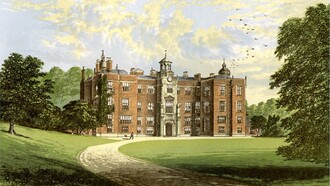Fez cultural and spiritual history
The city of Fez was founded in 789 by Idris I, the founder of the Idrisid dynasty. He was chased by the Abbasids in the Middle East. Idriss I was a descendant of the Prophet. The city of Fez is an imperial and religious city, it has both a modern identity with a rich historical heritage. Fez has been growing because of its own potentialities and thanks to relationships forged with the cities and surrounding areas.
The streets of the medina, the most beautiful, the oldest and the most authentic ones of Morocco, stand to be a true labyrinth unchanged from the eighth century.
Fez has always been a magnet for immigrants and travelers, a destination for students and scholars, a lucrative market for traders and craftsmen. It still remains today a meeting place of ideas, experiences and cultural events of all backgrounds.
Called the "Zaouia" by the Sufis (the sanctuary), Fez is one of the imperial cities of Morocco. Once, the capital of the country (intellectually and politically) and crossroads of trade, the city is now a spiritual, cultural capital which has always been known for its hospitality.
Fez houses exhibit one of the first universities and library in the world, and cultural events such as the Sacred Music Festival held annually. Its mosques and synagogues, its souks, its walls, palaces and riads do attract visitors, about 1 million annually.
Fez during dynasties ruled Morocco
The city of Fez became during the Idrissids’ rule a religious, cultural capital as new residents bring their expertise. During the Almoravids’ dynasty, Fez lost its role as a capital because of the foundation of Marrakesh in the eleventh century.
In the twelfth century, the Almohad Sultan Abd el Moumem made the city a commercial hub. The exchanges were between the Maghreb, Spain, the Sahara, the East and the West.
On the thirteenth century, Fez became the capital thanks to the Merinids’ dynasty, a real boom in the city, especially in the fourteenth century. The city had been growing by adding walls and palaces. Administrations were installed there. It was the creation of Fez el Jadid (the New Fes). The city was at its peak. During the time Jews settled down in their own neighbourhood (Mellah).
In 1471, Fez was led by a new dynasty, the Blessed Wattas that created the Kingdom of Fez and a new population emerged: the Portuguese. In 1522, an earthquake destroyed a part of the city. But reconstruction was getting faster.
During the Saadians’ dynasty rule in 1549, it‘s the Saadians that governed the city and chose Marrakesh as the new capital of the country. In the seventeenth century, the city did not escape the civil wars and misery that resulted in plague and famine.
When the Alawites took the rule, the city became the capital in 1666, by Moulay Rachid (Alawite dynasty). It was booming in the eighteenth century not only economically but also religiously and intellectually.
At the time of the Protectorate, in March 1912, Moulay Hafid signed in Fez the Convention Treaty establishing the French protectorate over the country. Thus, a new city appeared more modern, more urban cohabiting with the old medina.
Rabat is now the definitive capital, but Fez remains the spiritual capital for all, the culture and craft of the country.
Fez: one of the touristic cities in Morocco
Tourism in Morocco continues to grow, making the city of Fez a new base for those who could not resist its charm. A real, economic factor: the city offers numerous cultural events, museums and other places to visit.
Tourism, especially in the old medina, is integral to the country's economy. It is the world's largest and oldest, hence its protection by the UNESCO.
The new city includes the administrative headquarters, but the medina is the historical center.
The medina is divided into three districts: first. Fes el Bali (the old), founded by Idris I, Andalusian Neighbourhood. Its two main arteries: Talâa Kbira and Talâa Sghira, where we find most of the bazaars. Second, Fez el Jadid (the new or half old), founded by Abu Youssef Yacoub sovereign in 1276 (Marinids). These two neighbourhoods filled with bazaars of all kinds, attracting tourists in large numbers every year. In its narrow streets and souks, we can only find the old traditions. Third, Fez the new city; it was founded by the French during the protectorate period.
Fez is on Morocco’s development strategy
On the industrial level, and as part of a coordinated strategic vision between the different local and institutional actors for development of the sector, the first Industrial Regional Development Program was launched in the region with an area dedicated to offshoring "Fes Shore." The main objective is to position the city within the national industrial development strategy and boost the development of new businesses in order to boost growth and reposition structuring sectors with high potential and added value.
A setting value of highly targeted innovative potential of the region of Fez may be provided by the first regional technology park "Fez Technovalley", one of the flagship projects launched in 2007 in Fez. A sectoral analysis was performed to identify the key areas that allow the opening of prospects for local development and that integrate with plans for priority and strategic actions.
This project will also be devoted to developing new economic potential and offers business insurance to benefit from the overall promotion, a unique site located in an urban environment enjoying worldwide fame, cultural, tourism and technology. The economic interest group "Fez Technopole Technovalley" was created to implement all the necessary means for the establishment, management and project development Technovalley Fez, such a project in Fez region will aim not only to take the lead and drive for economic and technological development of the region, but also to be a regional hub generator of synergy between the company, research, training and innovation.















